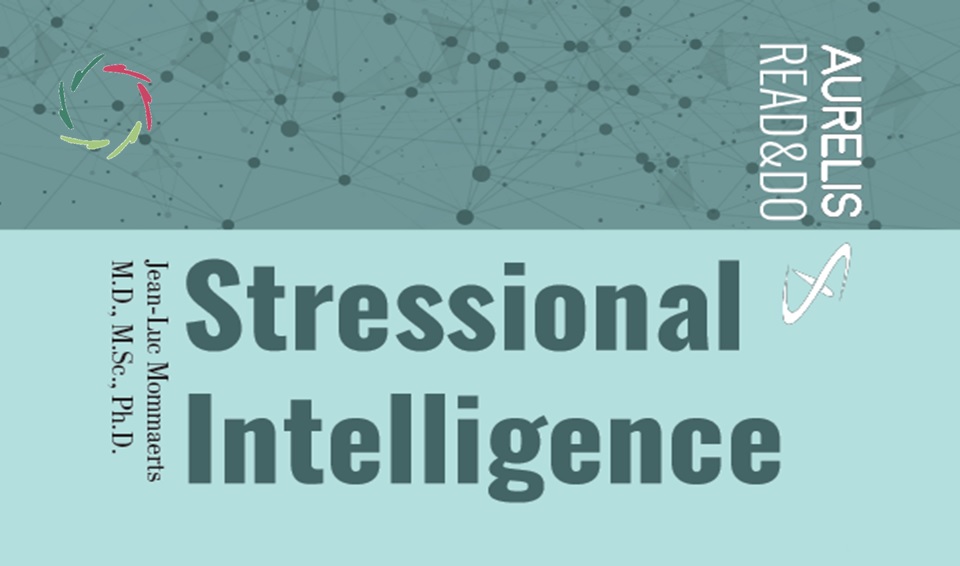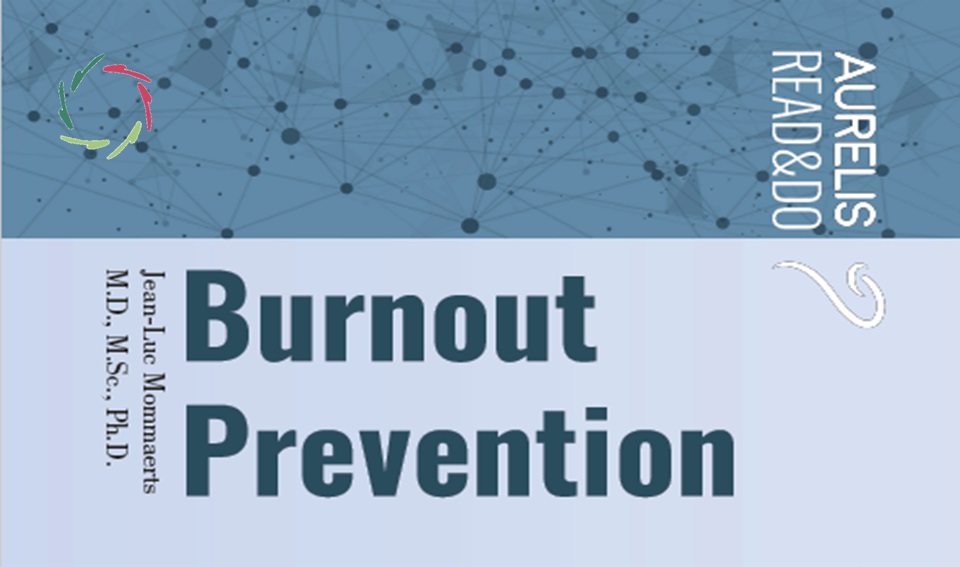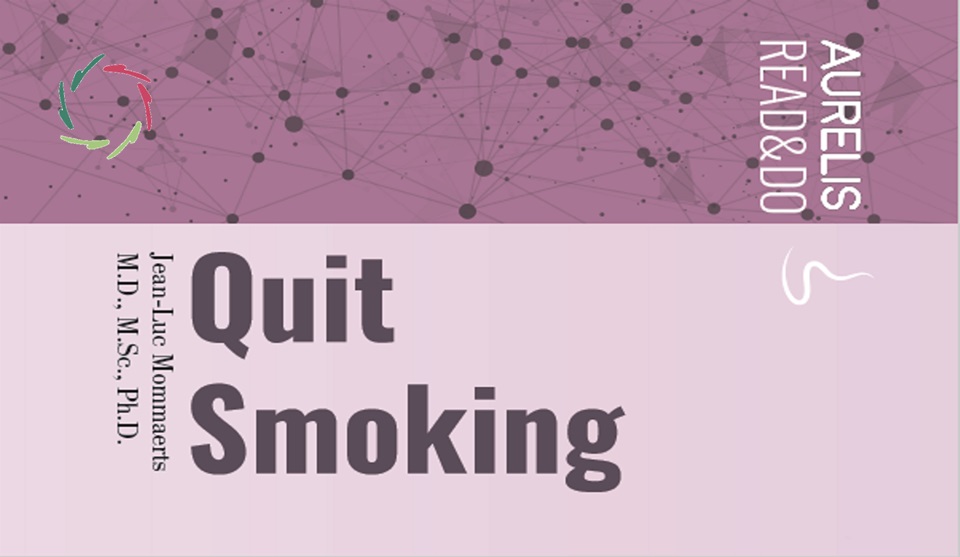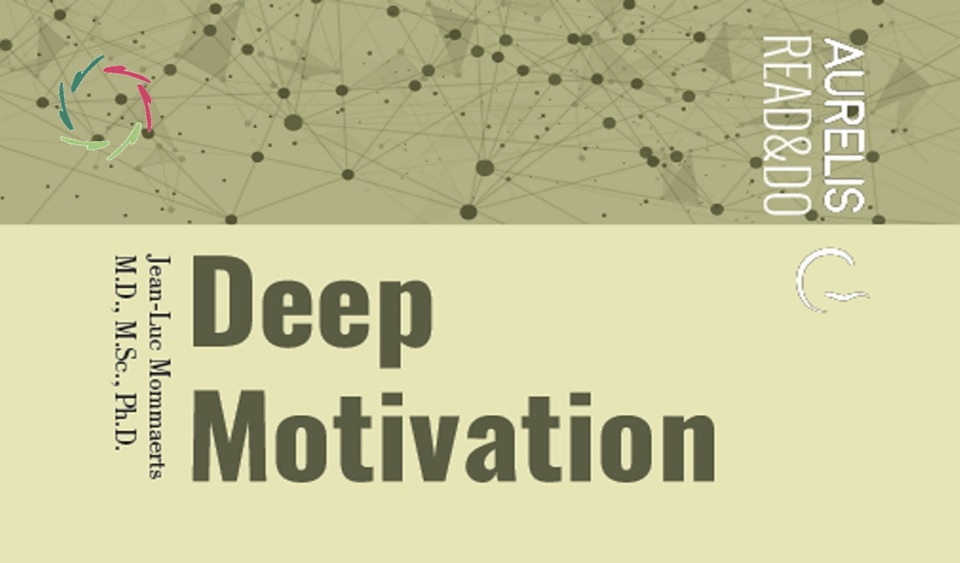Stressional Intelligence – Read&Do

This is the foreword to my book ‘Stressional Intelligence’ that you can find on Amazon (see menu).
Stress is not the amorphous blob that it is frequently purported to be. It is a multifaceted, multidimensional conglomerate, in every aspect related to meanings and deeper meanings. One cannot be stressed by something that is personally meaningless. Thus, stress is a phenomenon of meaning. Saying that one has a level X of stress – as if measured with a stress-o-meter – is meaningless.
But what does ‘meaningful’ mean in a sentence like “Something is really meaningful to me”? You may try, but be skeptical for any circularity in your explanation.
Meaning is one of those concepts that we think we understand, but when delving deeper, we have to acknowledge ignorance. Broadly speaking, it moves us to action. There is no emotion without meaning. There is no motivation without meaning. There is no motivation without emotion.
Meaning, motivation, emotion, stress
These are deeply related to each other. Stress can be seen as an emotion or a living motivation. So, there is in every stress a wanting-to. One wants to accomplish something meaningful, something that ‘enhances life’ – of course, depending on what one means with ‘life.’ Different people lead different lives with different meanings attached. If the wanting-to does not match with a being-able-to, a tension appears and doesn’t readily go away by itself. The accompanying emotion is what we generally refer to as being stressful. If the emotion is negative, we can speak of distress. With a positive emotion, one can say the situation is rather ‘challenging.’ You feel the adrenaline running through your veins. Most people like a good challenge.
In a natural environment, the usual stress is mainly useful for an organism. For instance, it keeps an animal looking for food if there is little available. It also keeps an animal vigilant for predators. At the arrival of a predator, stress-levels quickly rise. There is a wanting-to-escape and also a being-able-to, hopefully, but not necessarily. Physiologically, stress makes the animal more able to escape: more blood to locomotion, less to digestion. The stress in all this is not a distinct element but an intrinsic part of the whole. The whole being acts as a unity. The actions of this being are also together one. The human way of thinking frequently makes distinctions where none are present in order to arrive at simple concepts and easy comprehension. When trying to comprehend ourselves this way, it may backfire heavily.
Distress is not a disease
Given this unity, looking at distress as a kind of disease-to-be-treated doesn’t fit. Fighting against such a ‘disease’ is the same as fighting against the person as a whole. This way, the distress may be diminished only at a substantial cost to the individual. In time, the chances are high that the individual will be more vulnerable to other distress or real disease.
Even so, distress may flood beyond its natural function. When it’s extreme, the organism may die. When it’s chronic and experienced in hopelessness, the organism may get sick. The human habitat contains many elements that are conducive to such distress. The more we drift away from a natural environment, the higher the chance of this. Every organism has a wanting-to that is part of nature. Managing ourselves unnaturally brings much distress. Part of it is conscious; part of it is non-conscious.
Modern times
Modern times, stressful times. Not only because people have to do a lot of things because they are coerced by others: the boss, for instance. In their leisure too, people are driven to perform, to let the kids do stuff, to go on multiple vacations, to be hyper-active in general even if it’s (binge-)watching television and be drawn into the action on the screen. There is a lot of doing at the detriment of being, even while much of it is done in search of being.
Looking at the whole picture, people are driven towards (di)stress. In many cases, the distress is itself sought for its own sake. Organisms naturally seek stress, or call it challenge. Young animals seek challenges in their playing. The unnatural environment that we build for ourselves makes this seeking prone to distress. Technological progress heightens our ability to do so.
One example of such technology is social media. In this lies a continuous non-coerced wanting-to. At least, the coercion is not straightforward. Nevertheless, users want more and quicker, and are led to never being satisfied. There is frequently a form of addiction and lots of distress involved. The coercion, as is the case in any addiction, comes from inside. With social media and other developments, we have collectively fallen into addictive behavior and stress.
Chronic stress heightens vulnerability.
It is well known scientifically that chronic stress leads to vulnerability to many diseases, including migraine, irritable gut, allergic asthma, multiple sclerosis, angina pectoris and heart attacks. If you want to call them diseases; I prefer to call them symptoms. This may be directly related to the length (being ‘chronic’) and also to what causes stress to last that long. Natural factors generally don’t do so. Non-natural – artificial – factors are inclined to provoke stress that doesn’t resolve. Such stressing factors are a continuous long-lasting onslaught on a system that is not designed for such. Becoming vulnerable through this is quite logical.
This is very different from acute stress. Note that the difference between acute and chronic stress, like stress itself, is multidimensional. There is no uncomplicated continuum from one to the other. It is meaning-related in many ways, although none of these ways gets proper attention in the world of science, nor elsewhere for that matter. An important factor is the nocebo-effect: the expectation of a negative association that works negatively because of the expectation itself.
An interesting direction of research is about the influence of acute stress upon chronic stress. Apart from each other, research shows different, sometimes even opposite, effects from both. A vaccination may provoke a more positive immune response when given in acute stress and less during chronic stress. So, does acute stress within chronic stress go one way or another? It probably superposes upon the negative effect of chronic stress.
The last several years have seen a growing number of people in burnout. This is another indicator of excess stress that rages until people are effectively burned out. It is a question of motivation. When people’s wanting-to bashes sky-high against a not-being-able-to, motivation burns in emptiness until it burns no more. Stressional Intelligence may be the best way to prevent a further upsurge of burnout.
Into a whirlpool
Distress is apt to get into a whirlpool together with other factors. For instance, in a stomach ulcer, a bacterium (H. Pylori) is present, but it is also present in many stomachs without ulcers. Chronic stress may make the stomach wall more vulnerable to the bacterium. This leads to the attention of the stomach’s ‘owner’ being directed there, in view of symptoms. This may heighten the nocebo effect (expectation) of renewed stomach ache and related symptoms. The whole construct, like a whirlpool, starts turning. Any element makes more powerful one or more of the others in a self-perpetuating, self-enhancing pattern. Such a whirlpool is the reverse of equilibrium-seeking homeostasis. It is an entity within an entity, like a physical whirlpool in a stream of water. When it gets continuously fueled, it turns harder and harder. Disease is born. Fighting the disease may, in such a case, push even more energy into the whirlpool.
This may be a driving factor in many diseases. When looking at one cause only (is it stress or the bacterium?), one risks also seeing one cause. If one always wants to see a physical cause, one may always look beyond any psychological factors. Also, one does not see the whirlpool. Taking out the physical cause may be enough to diminish the power of the whirlpool. However, this way, a lot remains invisible. The patient does not get the incentive to work on his problem of chronic stress. The problem may fester and show itself in another whirlpool immediately or in the future.
A present-day whirlpool is COVID-19. In my book Minding Corona, I have taken this as a central metaphor to explain that we should not only look at the virus as the one and single cause of the pandemic, at large and at the level of the individual person/patient. In a happening such as COVID-19, one may see that the whirlpool can be vast, even worldwide. Many individuals can be inside it together, intensifying each other’s nocebo and other factors of chronic stress related to the phenomenon. One might call it a phenomenon of mass hysteria. It acts deep-to-deep from non-conscious to non-conscious. Since one is not conscious of what is non-conscious, it is, by definition, hard to see. With many people involved, the lure to look right through it while still not seeing it is immense. The more people involved, the stronger the energy of the whirlpool. At the same time, the energy to keep each other in the unknown and not-seeing what is happening can also become more pronounced. There is an active, collective denial. With a strong incentive not to see and a strong disincentive to see, it is logical that many people align. But this is, as we are witnessing now, extremely dangerous. We have fallen blindly into a whirlpool and are at the brink of doing it again, falling from lockdown towards possible meltdown.
Stressional intelligence
Stress may be treated as a waste bucket in which to place everything that is supposed to be merely psychological, thus not real, or even worse, not worthy of medical attention. The patient is told to learn to live with his symptoms and try to relax a bit.
More positively, it may also be a general concept to denote that one can always work on it. One doesn’t need to be ill or have symptoms or be at the brink of a burnout or breakdown. It’s this second meaning that I want to convey with ‘stressional intelligence.’ One can always heighten one’s intelligence. In fact, it is a sign of intelligence to do so. One should not avoid stress but learn to manage it in intelligent ways.


